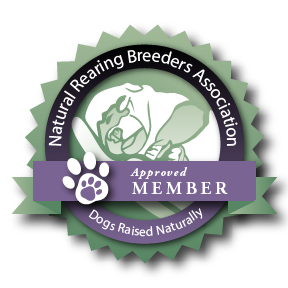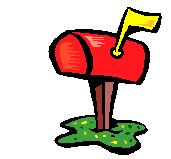Chapter 21
Feeding Your Dog Vegetarian Style
This chapter came into being after I received a letter from a lady who needed information about feeding dogs vegetarian style. The relevant part of her letter went something as follow…..
‘’What do you know about vegetarian diets for dogs? I have lots of vegetarian friends with animals that are also vegetarians. People often ask them about vegetarian diets for dogs. They are not one hundred percent sure that they are doing it right. Are they handing out the right advice? The following is an outline of the diet used by one of these friends. She has seven rescued mutts. What we would like to know, is this Ok? Can you expand on it? Can you do better?’’
The dietary ideas that lady sent me were very simple, and typical of what people think vegetarian dogs should eat.
Typical Doggy Vegetarian Diet
- Brown Rice (Base)
- Lentils
- Soup Mix
- Salad (carrots, celery etc.)
- Bread
- Vitamin supplement
- Fruit
- Flavoured with vegan gravox
My answer, or at least the relevant bits went as follows……
Vegetarian Diet for Dogs – Discussion
When you ask about vegetarian diets, I get the impression you mean totally vegetable, with not even the hint of eggs or dairy products or bones?
- If that is the case, your dogs are missing foods which are vitally important to their health, the most important being raw meaty bones.
Another problem of purely vegetarian diets is the lack of vitamin B12. Fortunately, you are adding a vitamin supplement. Do check and make sure if contains B12.
A saving factor for a lot of vegetarians is that most vegetables do have some tiny insects left on them, which usually provide this essential vitamin. The other way to provide extra B12 would be to have your vet give your dog an injection of vitamin B12 once a year with the annual vaccination booster.
Anyway, let me first talk about the good features of the diet you have sent me.
The Good Things About That Diet
- The first good feature is that lentils, a legume, are added to the rice base.
This ensures that the diet is balanced with respect to it’s essential amino acids. That is, when a diet includes both legumes and grains, and these are it’s major source of proteins, the proteins in this diet will provide a balance of all the essential amino acids.
In those parts of the world where people get most of their protein from vegetable matter, rather than animal sources, they almost always eat a combination of a grain and a legume. Unfortunately, many dog owners are not aware of this.
- The most common mistake is where people feed dogs mostly rice. It is not common to see dogs fed a diet containing mostly legumes, but that would be equally as bad nutritionally, and very ‘’windy’’.
Both extremes leaves the eater, your dog(s) defients in some essential amino acids… Over a period of time this can reselt in a gradual decline in health.
- The second good feature of this diet is that it is a low protein diet. Because this vegetarian diet is low in protein it will promote a long life.
ALL modern nutritional reserarch points the finger at continual excessive protein as a major cause of the degenerative diseases, particularly kidney disease. Low protein is one of the great benefits of a vegetarian diet compared to a meat based diet.
Dogs on high protein diets (i.e. the commercially fed dog) all their life – at every meal, do not last as long as dogs fed restricted amounts of protein or dogs fed a natural diet with verying amounts of protein.
- The third good feature of this diet is that it is a high fibre diet.
This diet contains more than adequate levels of fibre. However, it is mostly cooked fibre. Cooked fibre is much less valuable to the health of dogs than raw fibre. Observations of many hundreds of dogs with the fibre responsive diseases such as obesity and diabetes during eighteen years of practise, shows that they are all less prevalent on a raw diet compared to a cooked diet.
- The fourth good feature is that this is a high potassium diet. That is, having lots of veggies, it is loaded with potassium and low in sodium.
In general, high potassium diets are healthy diets, as opposed to the commercial dog food diets which are high in sodium. The sodium-filled commercial dog foods, actively promote kidney and heart disease.
However, I am not at all sure about the levels of sodium in the vegan gravox.
- Consider substituting the vegan gravox with brewer’s yeast, which although high in sodium has many additional nutritional features. Garlic is also an excellent flavouring herb. Use it and other herbs to taste. You also then get the added benefits of the active ingredients in those herbs.
The Bad Things About This Diet
- The first feature that really bothers me about your vegetarian diet apart from the lack of bones is that it is a basically cooked diet.
I am assuming that the rice and lentils form the bulk of this diet. That means many vital nutrients are destroyed before they have a chance to promote the health of your dog. These include many essential vitamins, all the enzymes originally present in the food, plus many naturally occuring anti-oxidants.
It is not so bad in the case of the B vitamins. They are probably being replaced in the added vitamin supplement. However, does your vitamin supplement contain adequate or even any vitamin C ?
Mostly vitamin C has to be added separately. I like to see at least 50 mg per kg per day. On the other hand , there will be some vitamin C in the fruit. The other point is that because your diet is much healthier than most commercial dog food diets, even before you modify it as I suggest, your dogs will in fact be making more vitamin C than the average unhealthy commercially fed dog.
Of course this diet will also contain some enzymes. That is, if the fruit is fresh (not cooked), over-ripe, and there is lots of it. The diet will however be low in naturally occurring anti-oxidants. These are vital in the prevention of degenerative diseases, and the slowing of the ageing process.
- The best way to get around the problem of a lack of anti-oxidants is to add them to the diet. This always makes an incredible difference to the health of dogs. That is, add vitamin A, C, and E in appropriate amounts.
The other way is to make sure that you include absolutely lads of fresh raw foods .. vegetables and fruit .. in the diet.
- The second thing that worries me about many vegetarian dogs is that their diet is mostly rice.
Grains are not a natural food for dog and will eventually cause problems. There are a number of reasons for this including the high starch content and the fact that they have to be cooked which we have mentioned.
- Another problem is that of the grains, rice, the one normally chosen is about the worst, particularly if it is white rice. Even brown rice in large amounts will cause health problems for dogs.
I have seen large numbers of rice fed dogs over the years with cancer, pancreatic problems including diabetes, and arthritis. Each of the these problems could be directly attributed to a lifetime spent eating a predominantly rice based diet. IF you must use grains, use less of them and use rolled oats instead or in addition.
- Repace those grains and legumes with many more green leafy vegetables, suitably prepared. That can include sprouted grains and legumes.
You mention bread. It is a highly processed product. Use it but not in large amounts.
Do add brewer’s yeast as I have suggested. Apart from the B vitamins, it contains a glucose tolerance compound containing chromium. This compound helps stabilise blood sugar levels, particularly where a dog is being fed large quantities of cooked and therefore very digestible carbohydrates. By this means it helps prevent sugar diabetes.
- A major part of the problem ef excessive grain is the low levels of zinc available to your dog.
This contributes to growth, reproductive, immune and skin problems plus pancreatic problems including Pancreatic Insufficiency, Pancreatitis, and sugar Diabetes.
The foods to add to a vegetarian diet to improve this situation are peas, carrots, cabbage and oatmeal. Alternatively, or in addition if would also be worthwhile to add a zinc supplement.
- Another major problem with most vegetarian diets based on grains is that they are low in essential fatty acids.
This la ck will eventually produce a number of problems, the most obvious being skin problems. The solution is to add some vegetable oils to the diet. Soybean and corn oil would be the most logical because of their balance of the omega 3 and omega 6 groups of essential fatty acids.
In winter, particularly if your dog does not get much sun, add some cod liver oil for it’s vitamin D content. The vitamin A which is also found in cod liver oil helps protect agains coughs and colds, so prevalent in the colder months of the year. It will also confer health in many other areas of your dog’s life, including it’s skin.
Some people also advocate a little apple cider vinegar daily. The unprocessed (expensive) stuff from your health food store. I do not know the scientific basis of the value of this. However a lot of dog owners swear by it as having immune stimulating effects. (That is what they mean even if they do not put it that way.. perhaps it is full of anti-oxidant type nutrients.)
- Grain based diets also tend to be low in the sulphur containing amino acids.
The two which worry me are Metrionine and Taurine. Methionine is essential (amongst other things) for skin health, whilst Taurine is essential (amongst other things) for brain health.
A lack of taurine is a probable major cause of epilepsy. I have seen epilepsy disappear when a dog with the problem was taken off a dry food based on grain, and fed a balanced natural diet with a much higher Taurine content.
To ensure adequate sulphur in the diet, do add plenty of garlic and onions and chives etc. and also lots of green peppers. It is also not a bad idea th add some elemental sulphur. This is known as flowers of sulphur.
- Another problem is that this diet may be low in some minerals because of the lack of bones, dairy products and whole seafoods.
The one that worries me most is calcium. another potential problem is a magnesium deficiency. The only really good plant source of calcium, apart from legumes, that I am aware of, is crused sesame seeds or tahini. Magnesium is found in corn and also in fresh green leafy vegetables.
This may be a case where one of the complete mineral supplements will be of benefit. However, none of those have the same health promoting benefits of raw meaty bones.
Both kelp tablets and brewer’s yeast help with any possible lack of trace minerals.
- Another problem feature of most vegetarian diets is that the vegetable or salad portion is poorly digested by the dog.
This happens when it is not prepared properly for a dog. That is, it is presented to the dog in very small quantities but in farily large lumps.
Unless the salad vegetables are properly prepared, and there are sufficients of them, they are probably of very little value.
The only way to prepare vegetable material for a dog and that included sprouted grains and sprouted legumes, corn kernels, carrots, celery, peas, beans, green leafy vegetables – whatever, is to turn them into a mush, much like the intertinal contents of a cow or a sheep.
One very good way to do that is to put them through a juicer and then remix the juice and the pulp and feed that to the dog. If that makes the mix too sloppy, drink some of the juice yourself!
- I know this diet will almost certainly be low in iodine because all Australian soils are low in iodine, which means the food they produce is also low in this important mineral.
Low iodine in your dog’s diet does not allow your dog’s thyroid to function properly, and if you are feeding lots of members of the cabbage family to your dog, it may also be causing the thyroid to be less active that it ought to be. This can interfere with growth reproduction, and the ability to have plenty of energy all day long. ADD SOME KELP DAILY.
CONCLUSION
Hope you and your veggie friends find this helpful. If you make the changes as I have suggested, those dogs will be a lot healthier. If you can see your way clear to adding some raw meaty bones (at least fifty percent of the diet would be great), and some eggs, you will indeed have a superbly healthy diet for your dogs.
Best wishes……




